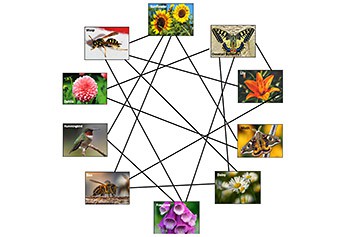The Role of Interdependence for Pollination and Seed Dispersal
Summary
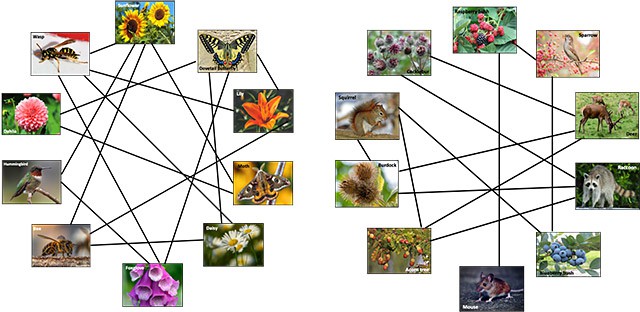 Image Credit: Svenja Lohner, Science Buddies / Science Buddies
Image Credit: Svenja Lohner, Science Buddies / Science Buddies
Overview
Pollination and seed dispersal are both crucial processes in a plant's reproduction cycle. These processes are helped along by many factors, including different animals. For instance, some animals disperse the plant seeds, while others transfer pollen from one flower to another. In this lesson plan, students will investigate the interdependence between plants and animals for pollination and seed dispersal by creating interdependence webs out of yarn. Based on their created interdependence webs, students will discuss factors that could affect the stability of such a web.
Learning Objectives
- Explain the process of pollination and seed dispersal in a plant's reproduction cycle.
- Model the interdependence between organisms to move pollen or disperse seeds.
- Discuss the importance of each component in the interdependence web.
NGSS Alignment
This lesson helps students prepare for these Next Generation Science Standards Performance Expectations:- 2-LS2-2. Develop a simple model that mimics the function of an animal in dispersing seeds or pollinating plants.
|
Science & Engineering Practices
Developing and Using Models.
Develop a simple model based on evidence to represent a proposed object or tool. |
Disciplinary Core Ideas
LS2.A: Interdependent Relationships in Ecosystems.
Plants depend on animals for pollination or to move their seeds around. |
Crosscutting Concepts
System and System Models.
Systems in the natural and designed world have parts that work together. |
Materials
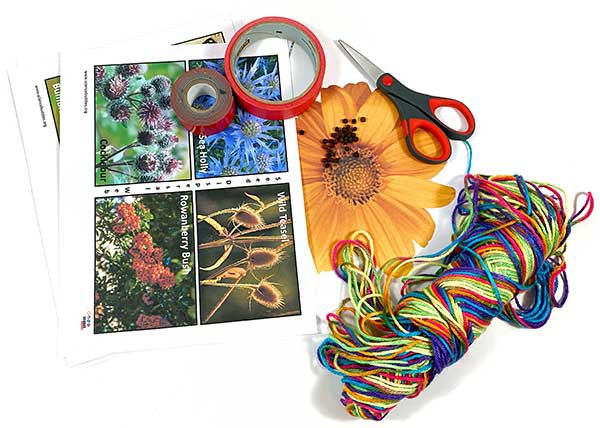 Image Credit: Svenja Lohner, Science Buddies / Science Buddies
Image Credit: Svenja Lohner, Science Buddies / Science Buddies
- Balls of yarn (2)
- Scissors
- Space for the class to form two large circles
- Double-sided tape
- Whole black peppercorns
- Printed and cut Pollination Seed Dispersal Example Pictures
- Printed Pollination Seed Dispersal Web Pictures
Background Information for Teachers
This section contains a quick review for teachers of the science and concepts covered in this lesson.In order to survive in the wild, every animal or plant is dependent on many factors. These can include biological factors, such as other animals or plants, and abiotic factors, which include the sun, water, or air. For animals, the basic needs boil down to water, light, air, and some kind of shelter; whereas for plants, water, light, air, and nutrients are essential for survival.
Pollination and seed dispersal are great examples to illustrate the interdependence between living organisms, such as animals and plants, in nature. All plants need pollination to make seeds and fruits. Pollination occurs when pollen gets carried from the male part of one plant's flower to the female parts of a new flower (Figure 1). This female plant part, called the pistil, is usually a long stalk located in the center of the flower and is also made up of several parts, one of them being the stigma, which receives the pollen. The pistil contains the ovary at its bottom, which houses the female plant eggs, called ovules. When pollen is dropped onto the stigma of a new flower, the eggs, or ovules, inside the plant ovaries are fertilized. The fertilized ovules then grow into plant seeds and the ovary becomes the fruit. Most plants rely on pollinators to do the pollinating for them. These pollinators are usually animals like insects (bees, wasps, flies, moths, butterflies), birds, or bats. In turn, many of these pollinators are equally dependent on the plants or pollen as their food source. Without the pollen or nectar that they collect, they would not be able to survive.
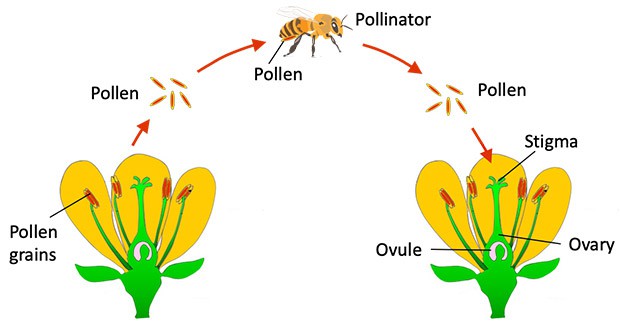 Image Credit: Svenja Lohner, Science Buddies / Science Buddies
Image Credit: Svenja Lohner, Science Buddies / Science Buddies
Figure 1. During pollination, a pollinator carries pollen from one flower to the stigma of another flower.
Seed dispersal is the next step in the life cycle of a flower. Once the fruits and seeds are ready, they have to get to a place where they can grow into a new plant. Nature has many different strategies for seed dispersal (Figure 2). A common one is dispersal by animals. This can happen in two different ways. The first one is seed dispersal via ingestion. Many trees or bushes—for example, many types of berries and some nut trees—surround their seeds with an edible and nutritious fruit. Birds and mammals are attracted by these fruits and will eat them. The seeds are usually not digested by the animal and will then be excreted. This gives the seeds a new place to grow. The second animal dispersal mechanism is used by plants that cover their seeds in hooks or spines. These so-called burrs are designed in a way that they attach to an animal's fur as it passes by. Eventually, the seed will fall off and grow a new plant. Burdock, sea holly, and cocklebur are some plant species that disperse their seeds in this way. Another seed dispersal mechanism that students might be more familiar with is the wind. Many plants grow their seeds in shapes that can be carried long distances by the wind. Propeller-shaped maple tree seeds and feathery dandelion seeds are some examples of wind-dispersed seeds.
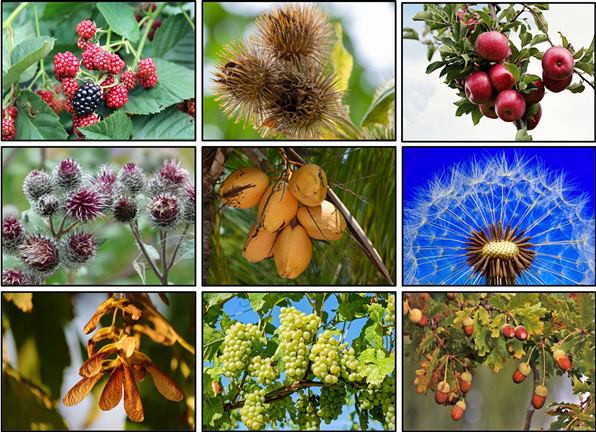 Image Credit: Svenja Lohner, Science Buddies / Science Buddies
Image Credit: Svenja Lohner, Science Buddies / Science Buddies
Figure 2. Some examples of seeds that are dispersed via animals, wind, and water.
In this lesson plan, students will create a pollination and seed dispersal web that demonstrates how all of these biological factors work together to allow plants and animals to reproduce in nature. Students will also realize that the removal of one part of the pollination or seed dispersal web has significant effects on the rest of the web members, as they are all connected. For example, the extinction of pollinators such as bees would have a huge impact on worldwide food production. According to BBC, they pollinate 70 of the approximate 100 crop species that feed 90% of the world!


